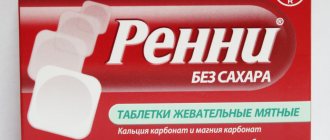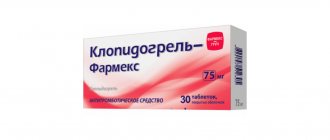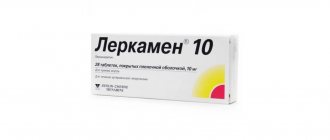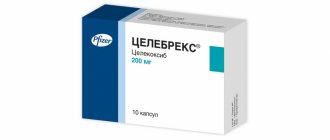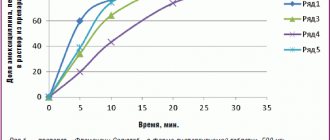Share:
Sports nutrition that contains phytoecdysterone is produced under the name Ecdysterone (as well as Ecdisten). This substance is found in plants such as safflower leuzea, Turkestan tenacious and Brazilian ginseng. Basically, all modern dietary supplements are based on the first one.
Ecdysterone is believed to have biological effects in humans. But in scientific circles there is heated debate on this issue and there is no clear opinion yet about the effectiveness of drugs on this basis. Available objective studies confirm the positive effects, but all of them were conducted on animals. There is no evidence of any effect of ecdysterone on libido or the ability to have an erection. However, since the product is relatively safe, it can be used as a nutritional supplement for athletes if the athlete himself feels improvements and shows good results.
Claimed properties and grounds for purpose
Manufacturers talk about the following properties of the additive:
- Increased protein synthesis.
- Maintaining normal nitrogen balance in muscle tissue.
- Improving the functioning of the central nervous system, especially increasing the speed and efficiency of axonal responses leading to striated cells.
- Accumulation of protein and glycogen in muscles.
- Stabilization of glucose and insulin levels in the blood.
- Reducing fatigue during training.
- Reducing cholesterol levels in the blood.
- Stabilization of heart rate.
- Skin cleansing
- Increased strength and endurance.
- Increase in “lean” muscle mass.
- Fat burning.
- Antioxidant and immunomodulatory properties.
According to manufacturers, the use of ecdisten is advisable for:
- asthenia of various origins, including those associated with overwork;
- asthenodepressive states that arise against the background of impaired protein synthesis;
- long-term intoxication;
- severe or prolonged infection;
- neuroses and neurasthenia;
- chronic fatigue syndrome;
- dysfunctions of the cardiovascular system.
What is actually known about Ecdysterone?
There is still no concrete data on whether supplements containing ecdysterone actually have a positive effect on the athlete’s body. The only confirmed information was provided by Soviet scientists in the mid and late 20th century. The anabolic activity of ecdysterone and its ability to enhance protein synthesis were revealed. In 1998, the effectiveness of the substance in combination with a protein diet was assessed, the study also showed good results, namely, the experimental subjects gained about 7% of lean muscle mass and got rid of 10% of fat. Other experiments were conducted that showed the antitumor, antioxidant and some other properties of ecdysterone.
However, despite the positive results of these studies, they cannot be considered statistically reliable. The fact is that they do not meet modern standards, namely the control group, randomization (i.e. random selection), etc. Moreover, the bulk of the experiments were carried out on animals.
Relatively recently, in 2006, a new study was conducted, which involved taking ecdysterone and simultaneous physical activity. According to the results of this experiment, it turned out that the supplement had no effect on muscle growth, endurance or strength. Many “experts” refer specifically to this study. But is this reasonable? The experimental protocols record that the subjects took only 30 mg of ecdysterone per day, which is 14 times less than the doses that showed an anabolic effect in animals. While the control group of men weighing 84 kilograms had to take a daily dose of at least 400 mg. Therefore, this study is useless and has no scientific value.
Another experiment was conducted in 2008 on rats. He showed that ecdysterone affects the number of satellite cells, from which muscle cells are subsequently formed.
From all that has been said, the following conclusions can be drawn:
- For all this time, not a single objective study has been conducted that would show how ecdysterone actually affects humans.
- Experiments conducted at the end of the last century and the beginning of this prove that the substance is effective in relation to animals.
New in the treatment of erectile dysfunction
The problem of erectile dysfunction (ED), which has traditionally been dealt with almost exclusively by urologists and sex therapists, is now attracting the attention of doctors of other specialties due to the emergence of new possibilities for conservative treatment of this disorder.
First of all, it is necessary to determine the etiology of ED and, if possible, treat the disease itself, and not just eliminate its symptoms. It is known that ED can be caused by various factors. Some of these factors can be influenced: for example, changing the patient’s lifestyle, stopping some medications prescribed to him. In many cases, adjusting the therapy a patient receives for an internal disease can help overcome the negative sexual changes seen with some types of treatment. For example, with the development of ED in patients with arterial hypertension, thiazide diuretics and non-selective β-blockers are canceled and preference is given to calcium antagonists, angiotensin-converting enzyme inhibitors and α-blockers, which have a lesser effect on the sexual sphere (MA Khan et al., 2002; CM Ferrario, P. Levy, 2002); the use of angiotensin receptor inhibitors can even slightly increase sexual activity in men (R. Fogari, A. Zoppi, 2002).
Patients with androgen deficiency need to consult an endocrinologist to decide whether to prescribe hormone replacement therapy. Testosterone is usually prescribed in cases where other methods and agents are ineffective (primarily phosphodiesterase type 5 inhibitors - PDE-5). Testosterone hormone replacement therapy is contraindicated in patients with symptomatic prostate disease and a history of prostate cancer.
Treatment of ED itself includes non-invasive (drug therapy, use of vacuum constrictor devices) and invasive methods (intracavernous injections of vasoactive substances, surgical treatment). The advantages and disadvantages of various ED treatment methods are presented in Table 1.
Drug therapy for ED
The most effective and convenient method of treating both psychogenic and organic ED is the use of PDE-5 inhibitors. The appearance on the pharmaceutical market of the first drug from the group of PDE5 inhibitors - sildenafil citrate (Viagra) - marked a new era in the treatment of ED; relatively recently, it was “joined” by vardenafil (Levitra) and tadalafil (Cialis).
All these drugs have the same mechanism of action. During sexual stimulation, cyclic guanosine monophosphate (cGMP) accumulates in vascular smooth muscle cells due to activation of the nervous system and the release of nitric oxide. It is he who triggers a cascade of biochemical reactions leading to the occurrence and maintenance of an erection. Normally, the concentration of cGMP decreases when sexual stimulation ceases due to the destruction of PDE-5. With ED, there is a deficiency of cGMP due to various pathogenetic factors, and its destruction by PDE-5 leads to insufficient erection or its absence. PDE5 inhibitors do not have a direct relaxing effect on the corpora cavernosa, but enhance the relaxing effect of nitric oxide by inhibiting PDE5 and increasing cGMP concentrations during sexual arousal.
PDE-5 is localized primarily in cavernous tissue, although it is also found in the smooth muscles of blood vessels of other organs, lungs, kidneys, gastric cardia, and platelets. The distribution of PDE-5 in the body is quite individual, so some patients note certain undesirable effects that are common to drugs in this group and are associated with the blockade of this enzyme. Such undesirable effects include headache, hot flashes, dyspepsia (like reflux) and nasal congestion. Blockade of other PDE isoforms—a total of 11 of them are known (Table 2)—as a rule, is not clinically significant and is not accompanied by any serious undesirable effects, since all PDE-5 inhibitors are highly selective and their effect is reversible.
Compared to other drugs in this group, tadalafil blocks PDE-6 to a lesser extent (Table 3). Blockade of this PDE isoform causes transient color vision impairment; therefore, when used, there is a minimal risk of color vision impairment. On the other hand, tadalafil, compared to sildenafil and vardenafil, is less selective for PDE-11, but its blockade is not accompanied by any recorded clinical effects. This PDE isoenzyme is found in testicular tissue, however, as studies by WJ Hellstrom et al (2002) have shown, daily intake of tadalafil at a dose of 10 or 20 mg per day for 6 months does not have a negative effect on spermatogenesis.
| Relative selectivity of PDE5 inhibitors |
The pharmacokinetics of sildenafil, tadalafil and vardenafil differ significantly (Table 4). All three drugs are rapidly absorbed from the gastrointestinal tract.
Bioavailability is the percentage of free drug in the blood plasma after enteral administration. Moreover, it is determined by the loss of the substance during its absorption from the digestive tract and during its first passage through the hepatic barrier. The bioavailability of sildenafil is 40%, vardenafil - 15%. The bioavailability of tadalafil (85%) is calculated indirectly, since the active substance is not soluble in water and cannot be administered intravenously.
Simultaneous intake of fatty foods reduces and delays the absorption of sildenafil. The speed and completeness of absorption of vardenafil also depend on the fat content of food: if the fat content exceeds 57%, these indicators decrease, and if it does not exceed 30%, they do not change. The rate and extent of absorption of tadalafil do not depend on food intake.
The time to reach the maximum concentration of a drug reflects the rate of its absorption and the onset of the therapeutic effect. The peak level of drug concentration in plasma is reached on average 1 hour after taking sildenafil and vardenafil. The maximum concentration of tadalafil in plasma is observed on average 2 hours after taking the drug. The clinical effect of drugs also depends on the minimum therapeutic concentration and begins to appear long before the maximum concentration is reached. A number of clinical studies have shown that in most patients the therapeutic effect of PDE-5 inhibitors appears within 30 minutes after taking them.
After a single oral dose of 100 mg of sildenafil, the maximum concentration of the drug in the blood plasma reaches 450 ng/ml; 20 mg of vardenafil - about 20.9 ng/ml; 20 mg tadalafil - 378 ng/ml. This parameter is important when comparing different forms of the same drug: for example, the maximum concentration may be lower than the minimum effective concentration at which a given substance has a therapeutic effect. Different drugs have different therapeutic concentrations, so in this case, comparison of this indicator is uninformative.
The half-life (T1/2) - the time during which the concentration of the drug in the blood decreases by half from its initial (maximum) value - is 4 hours for sildenafil and vardenafil, 17.5 hours for tadalafil. In practice, this means that in terms of duration The action of tadalafil is significantly superior to other PDE-5 inhibitors. The equilibrium concentration of tadalafil is reached on the 5th day when taken daily and exceeds the initial concentration by 1.6 times, so the drug does not have the ability to accumulate. The assumption about the possibility of accumulation of tadalafil with sufficiently frequent and regular use is not confirmed by clinical data, although there is evidence of good tolerability of the drug by men who took tadalafil for 2 years (F. Montorsi et al., 2004).
PDE5 inhibitors are metabolized via the cytochrome P450 system and are excreted primarily through the liver.
Direct comparative studies of the effectiveness and safety of PDE-5 inhibitors have not been conducted, however, due to the similarity of the mechanism of action of the above new drugs with sildenafil, comparison of their clinical effectiveness in the treatment of ED makes no sense at all. Potency is not relative from a clinical point of view, as it serves as a form of assessment of the effective concentration of the drug. Simply put, the clinical dose equivalent and the end result correspond to each other.
Results from different studies are difficult to compare due to differences in patient populations, inclusion criteria and statistical analysis methods.
In vitro, vardenafil demonstrated the greatest tropism for PDE-5 compared to sildenafil and tadalafil, i.e., its concentration required for effective blockade of PDE-5 was minimal. However, given its low bioavailability and the difference in doses used in clinical practice, the therapeutic effect of vardenafil in vivo is comparable to other PDE5 inhibitors. According to data obtained during the registration of drugs in Europe (Table 5), the proportion of successful attempts at sexual intercourse was 66% during therapy with sildenafil at a dose of 50–100 mg, 65% with vardenafil at a dose of 20 mg and 75% with tadalafil at a dose of 20 mg. In comparable studies, an improvement in the ability to achieve an erection during therapy with sildenafil was noted by 84% of patients (I. Goldstein et al., 1998), vardenafil - 80% (H. Porst et al., 2001), tadalafil - 81% (H. Padma- Nathan et al., 2001).
Fundamentally, PDE-5 inhibitors differ in the duration of the clinical effect: for sildenafil and vardenafil it is about 5 hours, for tadalafil - 36 hours. Some studies have shown that under certain conditions the duration of the clinical effect of sildenafil and vardenafil can exceed 4–5 hours, while While for tadalafil it is consistently long-lasting in the general population. Short-acting medications should be used shortly before sexual intercourse; the resulting dependence of intimacy on the time of action of the drug can lead to psychological discomfort. After taking tadalafil, patients can choose the most suitable moment for intimacy within 1.5 days. With sufficiently high sexual activity, the pharmacoeconomic effect also seems obvious: with approximately the same cost of the three drugs in terms of price/action time, the use of tadalafil turns out to be more profitable.
The in vitro activity of drugs varies significantly depending on the laboratory performing the analysis and whether the comparison used the original drug or whether it was synthesized (isolated) in the laboratory. Clinical efficacy is influenced by a number of parameters, such as bioavailability, elimination rate, binding to blood proteins, etc., so the therapeutic effect may not meet expectations based on high in vitro activity. In this regard, during clinical trials, the optimal dose from the point of view of effectiveness and safety is selected experimentally. Accepted drug dosage regimens are given in Table 6.
The safety profile of the three PDE5 inhibitors is also quite similar (Table 7). Sildenafil and vardenafil, compared to tadalafil, are slightly more likely to cause hot flashes and visual disturbances, but less often - dyspepsia (epigastric discomfort) and myalgia.
| Undesirable effects of PDE-5 inhibitors (in%) according to drug registration data in Europe (EU Summary of Product Characteristics) |
As noted above, most of the undesirable effects of these drugs, with the exception of visual impairment, are due to PDE5 blockade. The long half-life of tadalafil leads to a higher incidence of myalgia, which usually occurs at rest, in the evening or at night and is caused by the deposition of blood in the muscles. Similar effects have also been found in clinical studies of other PDE5 inhibitors when used in higher doses or with higher frequency. Adverse effects of all PDE5 inhibitors are usually short-lived and tend to resolve spontaneously. Their duration, as a rule, is shorter than the duration of the therapeutic effect of the drugs due to the lower concentration of PDE-5 in non-cavernous tissue and the body’s rapid adaptation to the secondary effect. The duration of side effects coincides with the duration of the therapeutic effect extremely rarely.
From a hemodynamic point of view, the action of PDE-5 inhibitors resembles nitrates (by the way, sildenafil was originally developed specifically for the treatment of angina pectoris). Since nitric oxide is involved in the regulation of blood pressure, PDE5 inhibitors have a slight hypotensive effect, which can be potentiated when taken simultaneously with nitrates and lead to a significant decrease in blood pressure. That is why the main contraindication to the use of PDE-5 inhibitors is the simultaneous use of organic nitrates: according to existing recommendations, they can be used no earlier than 24 hours after taking short-acting PDE-5 inhibitors, and no earlier than 48 hours after taking tadalafil . If the patient needs to periodically take nitrates, then there is no need to choose the safest of the three PDE-5 inhibitors, since an attack of angina can occur at any time after using these medications or directly during sexual intercourse. In general, it is believed that nitrates do not improve the prognosis in patients with coronary artery disease, therefore, in most cases, their use can be stopped or, if necessary, these drugs can be replaced with other drugs that have a similar mechanism of action. After stopping the use of nitrates, if no clinical complications have arisen, the patient can begin therapy with PDE-5 inhibitors without threat to health and life.
When using PDE-5 inhibitors, one should also take into account the potential risk of complications affecting sexual activity within 90 days after myocardial infarction, with unstable angina or angina that occurs during sexual intercourse, with heart failure that has developed within the last 6 months II functional class and higher according to NYHA, with uncontrolled heart rhythm disturbances, arterial hypotension (BP < 90/50 mm Hg) or uncontrolled arterial hypertension, as well as within 6 months after a stroke.
In addition, drugs in this group of drugs are used with caution in patients with a predisposition to priapism (for example, with sickle cell disease, multiple myeloma or leukemia), or in patients with anatomical deformation of the penis (for example, with angular curvature, cavernous fibrosis or disease Peyronie).
Thus, all three drugs are highly effective and safe drugs for the treatment of ED and have the same indications and contraindications for use. However, they have certain differences in terms of effectiveness and tolerability, the severity of which may vary between patients. In the absence of clear medical criteria for choosing a drug, it is quite difficult to assess the influence of one or another factor in each specific case.
Of interest are the first results of comparative studies of various PDE5 inhibitors, during which patient preferences were assessed. The study by H. Claes et al (2003) involved 91 patients with ED. Previously, all patients regularly took sildenafil citrate and each of them used tadalafil or vardenafil at least 4 times. The effectiveness of all three drugs was comparable, and 19 patients chose to switch to new drugs (tadalafil or vardenafil) mainly because they were better tolerated. An independent study conducted by H. Porst et al (2003) involved 150 patients with ED, including 24 (15%) who had not previously received treatment and 126 (85%) who were chronically taking sildenafil (Viagra). All patients were advised to take at least 6 tablets of each PDE5 inhibitor (sildenafil, tadalafil or vardenafil) sequentially. At the end of the study, 13% of patients preferred sildenafil to continue therapy, 30% preferred vardenafil, and 45% preferred tadalafil (in the vast majority of cases due to its long-lasting effect). In a double-blind study, P. Govier et al (2003) examined the preferences of primary patients who had not previously received therapy with PDE-5 inhibitors. Sildenafil and tadalafil were prescribed sequentially for 4 weeks. At the end of the study, 66% of patients preferred tadalafil and 34% preferred sildenafil to continue treatment.
The results of these studies, of course, cannot be considered final, especially taking into account the so-called expectancy effect of therapy - in clinical studies assessing the effectiveness of PDE-5 inhibitors, the placebo effect is consistently about 30%. In any case, the doctor should remember that he must convey to the patient balanced, reliable and objective information about the features of all three drugs, giving the patient the opportunity to choose the drug.
D. Yu. Pushkar , Doctor of Medical Sciences, Professor A. V. Vertkin , Doctor of Medical Sciences, Professor A. S. Segal, Doctor of Medical Sciences, Professor A. V. Topolyansky, Candidate of Medical Sciences, Associate Professor P. B. Nosovitsky, Candidate of Medical Sciences E. V. Krivtsova MGMSU, NNPOSMP, Moscow
Doses and rules of administration
If ecdysterone works in humans, which has not yet been proven, the daily dose for an adult should be at least 400-500 mg. It is worth noting that most supplements available on the market contain 10 or even 20 times smaller doses (among these are Ecdysterone MEGA - 2.5 mg, B - 2.5 mg, Ecdisten from ThermoLife - 15 mg). But today new supplements with more adequate doses have appeared. Ecdysterone from SciFit - 300 mg, GeoSteron 20 mg (per capsule).
To get the effect, you should take ecdysterone for at least 3-8 weeks, 400-500 mg per day. After the course they take a two-week break. The supplement should be taken after meals or before training.
Sources[edit | edit code]
- Slama K, Koudela K, Tenora J, Mathova A: Insect hormones in vertebrates: anabolic effects of 20-hydroxyecdysone in Japanese quail. Experientia 1996, 52(7):702-6.
- Slama K, Kodkoua M: Insect hormones and bioanalogues: their effect on respiratory metabolism in Dermestes vulpinus L. (Coleoptera). Biol Bull 1975, 148(2):320-32.
- Tashmukhamedova MA, Almatov KT, Syrov VN, Sultanov MB, Abidov AA: . Nauchnye Doki Vyss Shkoly Biol Nauki 1985(9):37-9.
- Syrov VN: . Nauchnye Doki Vyss Shkoly Biol Nauki 1984(11):16-20.
- Kholodova Y: Phytoecdysteroids: biological effects, application in agriculture and complementary medicine (as presented at the 14th Ecdysone Workshop, July, 2000, Rapperswil, Switzerland). Ukr Biokhim Zh 2001, 73(3):21-9.
- Toth N, Szabo A, Kacsala P, Heger J, Zador E: 20-Hydroxyecdysone increases fiber size in a muscle-specific fashion in rat. Phytomedicine 2008, 15(9):691-8.
- Wilborn C, Taylor L, Campbell B, Kerksick C, Rasmussen C, Greenwood M, Kreider R: Effects of methoxyisoflavone, ecdysterone, and sulfo-polysaccharide supplementation on training adaptations in resistance-trained males. Journal of the International Society of Sports Nutrition 2006., 3(2).
Side effects
Phytoecdysterone does not affect the functions of the endocrine glands, does not disrupt the athlete’s hormonal levels, does not have an androgenic effect and does not suppress the production of gonadotropins. The thymoleptic effect of the drug has not been confirmed (i.e. it does not work as an antidepressant).
It is believed that the supplement is not harmful to the body even in very large doses. Sometimes it is taken in quantities of more than 1000 mg per day, without side effects or overdose. Nevertheless, experts do not recommend exceeding a dose of 500 mg, although there are doctors who are confident that you should not take more than 100 mg per day, with unproven side effects.
According to manufacturers, people with an unstable nervous system may:
- insomnia;
- excessive excitement;
- increased blood pressure;
- migraine;
- Sometimes individual intolerance to the drug is observed.
If redness, rash, or slight swelling appear during administration, then you should stop taking the tablets and begin symptomatic treatment with antihistamines. Negative manifestations can be minimized if you strictly follow the instructions, follow the drinking regime, diet, and do not independently increase the duration of the course.
Ecdisten in bodybuilding[edit | edit code]
Ekdisten
(synonyms: Ecdysterone, ectysterone, 20 Beta-Hydroxyecdysterone, turkesterone, ponasterone, ecdysone, ecdystene) is a naturally occurring phytoecdysteroid.
Ecdisthene is produced from the plants Leuza rhaptonticum sp., Rhaponticum carthamoides, or Cyanotis vaga. They can also be found in high concentrations in the plant Pfaffia paniculata (also known as “Brazilian ginseng” or “suma”).
Research conducted over the past 30 years in Russia and Czechoslovakia has shown that ecdisthene may have beneficial effects on physiological processes in insects and animals.[1][2][3][4][5][6] However, most of the data on ecdysterones has been published in unknown publications, and the research results are difficult to interpret. Wilborn et al[7] supplemented 20-hydroxyecdysone (200 mg daily) with resistance-trained adult men for 8 weeks.
It was noted that taking 20-hydroxyecdysone had no effect on the growth of lean muscle mass, as well as on the processes of anabolism and catabolism. Thus, based on this well-controlled study, ecdisthene 200 mg/day does not appear to be effective in increasing lean muscle mass.
Perhaps future studies will reveal the ergogenic properties of ecdisthene, but at this stage it is too early to say that phytoecdysteroids are an effective and safe nutritional supplement for athletes.
Read the main article:
ecdysterone
Note
While taking Ecdysterone, the athlete must carefully monitor the quality of his diet. It is important to consume enough proteins, fats, vitamins and minerals. Since the product to some extent promotes muscle mass gain, it is necessary to provide the cells with additional building material.
Intense training combined with supporting the body with zinc, magnesium, omega-3,6,9 acids, protein and calcium gives the best results and keeps the athlete healthy.
